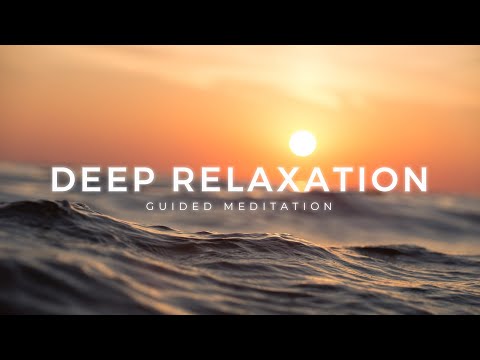In the fast-paced and demanding world we live in, stress has become an unavoidable part of our lives. Whether it stems from work pressures, personal responsibilities, or external factors, managing stress is crucial for our overall well-being and productivity.
In this article, we will explore powerful stress relief techniques that have proven to be effective in providing quick relief and promoting long-term relaxation. From distraction techniques and breathing exercises to mindfulness practices and progressive muscle relaxation, we will delve into a variety of strategies that can help alleviate stress and restore balance in our lives.
Additionally, we will discuss the benefits of aromatherapy, the importance of social support, effective time management techniques, and the positive impact of nature and outdoor activities on stress reduction.
This article aims to provide valuable insights to help you discover the techniques that work best for you, whether you are seeking immediate stress relief or long-term stress management strategies.
Quick Stress Relief Tips
When seeking quick stress relief, it is important to utilize effective techniques that can provide immediate relaxation and alleviate tension. Two techniques that can be particularly helpful are visualization and physical touch.
Visualization techniques involve closing your eyes and using your imagination to create a calming mental image. This can be anything from picturing yourself in a peaceful garden to imagining a serene beach scene. By focusing on these visuals, you can distract your mind from stressful thoughts and induce a sense of calm.
Additionally, the benefits of physical touch should not be underestimated. Hugging or kissing someone can release oxytocin, a hormone that promotes feelings of bonding and reduces stress. Even something as simple as squeezing a stress ball can provide relief by releasing tension in your muscles.
Incorporating visualization techniques and the benefits of physical touch into your stress relief routine can help you find immediate relaxation when you need it most.
Distraction Techniques
To further enhance your stress relief routine, incorporating distraction techniques can provide a valuable means of diverting your attention from stressors and promoting a sense of relaxation and calm.
When it comes to distraction techniques, there are a few options that can be effective. One option is to play computer or video games. These games can engage your mind and provide a temporary escape from your stressors.
Another simple yet effective distraction technique is making a cup of tea. The process of making tea can be soothing and therapeutic, allowing you to focus on the present moment and enjoy a warm and comforting beverage.
Breathing Exercises
Breathing exercises are an essential component of an effective stress relief routine, providing a quantifiable method for promoting relaxation and reducing anxiety. Deep breathing, one of the most popular techniques, involves taking slow, deep breaths from the diaphragm. This triggers the body’s relaxation response, slowing the heart rate and lowering blood pressure. Deep breathing not only helps calm the mind but also increases oxygen flow, improving brain function and reducing muscle tension.
There are various types of breathing techniques that can be incorporated into a stress relief routine. Alternate nostril breathing involves inhaling through one nostril and exhaling through the other, promoting a balanced flow of energy. The 4-7-8 breathing method, on the other hand, focuses on a specific breathing pattern of inhaling for 4 seconds, holding the breath for 7 seconds, and exhaling for 8 seconds, which can induce a sense of calm. Belly breathing or diaphragmatic breathing involves deep breaths that expand the belly, allowing for maximum oxygen intake and relaxation. Lastly, box breathing involves inhaling, holding, exhaling, and holding the breath again in a square pattern.
Incorporating different types of breathing techniques into a stress relief routine can have numerous benefits. Deep breathing activates the body’s relaxation response, reducing the levels of stress hormones like cortisol and promoting a sense of calm. It improves oxygen flow, which enhances brain function and helps with mental clarity and focus. Deep breathing also relaxes the muscles and reduces tension, providing physical relief from stress-related symptoms.
Mindfulness Techniques
Mindfulness techniques, frequently utilized in stress relief routines, promote present-moment awareness and cultivate a sense of inner calm and clarity. These techniques can be incorporated into daily activities to enhance overall well-being. Here are some practical mindfulness techniques to try:
- Mindful eating: Paying attention to the taste, texture, and sensations of each bite can help you savor your food and develop a healthier relationship with eating.
- Mindful walking: Engage your senses as you walk, noticing the feeling of your feet touching the ground, the sounds around you, and the sights in your surroundings. This can bring a sense of grounding and relaxation.
- Mindful journaling: By journaling your thoughts and emotions without judgment, you can gain insight into your experiences and reduce stress.
- Mindful breathing: Take a few moments to focus on your breath, observing the sensation of each inhale and exhale. This simple practice can help calm the mind and body.
Incorporating these mindfulness techniques into your daily routine can help you manage stress more effectively and find moments of peace in your busy life.
Progressive Muscle Relaxation
One effective technique for managing stress is practicing progressive muscle relaxation regularly. This technique involves systematically tensing and then relaxing different muscle groups in the body, helping to release tension and induce a state of relaxation.
To begin, find a quiet and comfortable space where you can lie down or sit comfortably. Start by taking a few deep breaths to help calm your mind and body. Then, begin to focus on your toes, intentionally tensing them for a few seconds before releasing the tension and allowing them to relax.
Move up through each muscle group in your body, from your feet to your head, using deep breathing techniques and guided imagery to enhance the relaxation experience.
Aromatherapy
What are the benefits and techniques of incorporating aromatherapy into a stress management routine?
Aromatherapy is a natural and effective way to relieve stress and promote relaxation. By using different types of essential oils, you can target specific stress-related symptoms and enhance your overall well-being.
Here are four key benefits and techniques of incorporating aromatherapy into your stress management routine:
- Stress relief: Essential oils like lavender have calming properties that help reduce anxiety and promote a sense of relaxation.
- Mood enhancement: Citrus essential oils, such as lemon or orange, can uplift your mood and boost your energy levels.
- Inhalation methods: Using a diffuser or carrying a portable inhaler allows you to enjoy the benefits of aromatherapy throughout the day.
- Bath time relaxation: Adding a few drops of essential oils to your bathwater creates a soothing and rejuvenating experience.
Incorporating aromatherapy into your stress management routine can provide a safe and natural way to alleviate stress and improve your overall well-being.
Social Support
Incorporating social support into your stress management routine can significantly enhance your overall well-being by providing a valuable network of trusted individuals to turn to during challenging times. Building strong relationships and recognizing the importance of social connection can help you navigate through stress more effectively.
When facing stress, talking to a trusted friend or family member can provide a safe space to express your emotions and gain perspective. Joining a support group can also offer a sense of belonging and understanding as you connect with others who may be experiencing similar challenges. Seeking professional help can provide expert guidance and support tailored to your specific needs.
Engaging in social activities, such as spending time with loved ones, volunteering, or helping others, can boost your mood and alleviate stress. These interactions allow you to share experiences, receive encouragement, and build a support system that can be invaluable during difficult times.
Time Management Techniques
To effectively manage stress and optimize productivity, it is imperative to implement efficient time management techniques. Here are four strategies that can help you better manage your time and reduce stress:
- Time Blocking: Divide your day into specific blocks of time dedicated to different tasks or activities. This helps you stay focused and prevents distractions from derailing your progress.
- Task Prioritization: Determine which tasks are most important and need to be completed first. By prioritizing your tasks, you can allocate your time and energy accordingly, ensuring that you meet deadlines and achieve your goals.
- Setting Realistic Goals: Break down big projects into smaller, more manageable tasks. Setting realistic goals helps you stay motivated and prevents overwhelm, allowing you to tackle tasks one step at a time.
- Delegating Tasks: If possible, delegate tasks to others who have the skills and capacity to handle them. This frees up your time and mental energy, allowing you to focus on more critical responsibilities.
Nature and Outdoor Activities
By incorporating nature and outdoor activities, individuals can further enhance their stress management techniques and promote overall well-being.
Outdoor exercises provide an opportunity to engage in physical activity while immersing oneself in the beauty of nature. Whether it’s going for a walk, jogging, cycling, or practicing yoga in a park, these activities not only help to relieve stress but also improve cardiovascular health and boost mood.
Additionally, grounding techniques can be practiced outdoors to alleviate stress and anxiety. Grounding involves connecting with the earth through activities such as walking barefoot on grass or sand, gardening, or simply sitting with your feet touching the ground. These activities help to restore a sense of balance and calm by allowing individuals to reconnect with nature and their surroundings.
Can Crystal Healing Techniques Be Effective for Stress Relief?
Many people believe that crystal healing techniques can be effective for stress relief and help defeat stress and anxiety. Proponents claim that certain crystals can promote a sense of calm and well-being when used in healing rituals or carried as a talisman. Though not scientifically proven, many find comfort in these practices.
Are Stress Relief Techniques Helpful for Alleviating Crying-Induced Headaches?
Yes, stress relief techniques can be effective relief for headaches caused by crying. Activities like meditation, deep breathing, and progressive muscle relaxation can help reduce stress, relieve muscle tension, and ultimately alleviate headaches. Engaging in these techniques regularly can have a positive impact on overall well-being.
Does Relaxation Techniques for Exam Stress also Work for General Stress Relief?
Yes, relaxation techniques for reducing exam stress with relaxation can also work for general stress relief. Deep breathing, mindfulness, and progressive muscle relaxation are effective in calming the mind and reducing stress hormones. Incorporating these techniques into your daily routine can help manage overall stress levels and promote a sense of relaxation.
Conclusion
In the fast-paced world we live in, stress is inevitable. However, by incorporating powerful stress relief techniques into our lives, we can find quick relief and promote long-term relaxation.
From distraction techniques and breathing exercises to mindfulness practices and progressive muscle relaxation, there are various strategies that can help alleviate stress and restore balance.
Additionally, the benefits of aromatherapy, social support, effective time management, and connecting with nature can further enhance our stress reduction efforts.
By exploring and implementing these techniques, we can find the ones that work best for us and improve our overall well-being.




